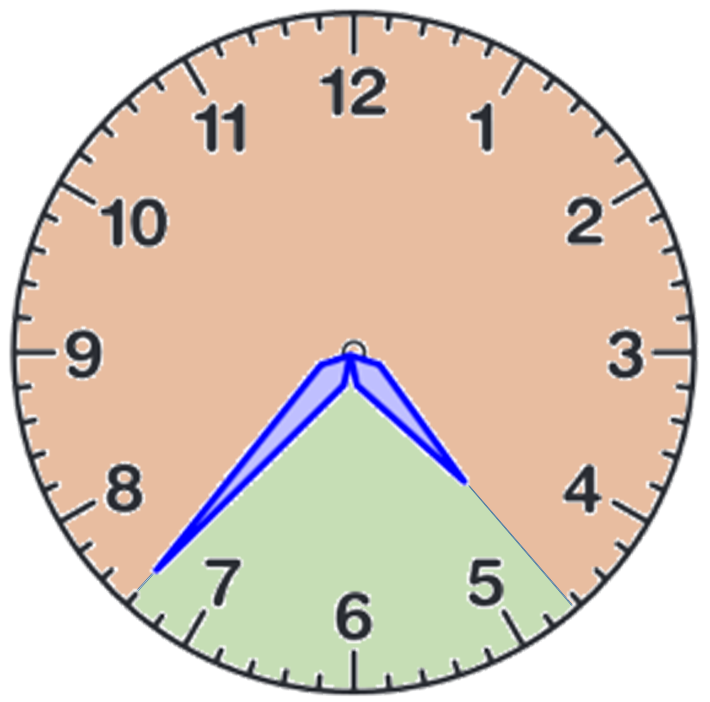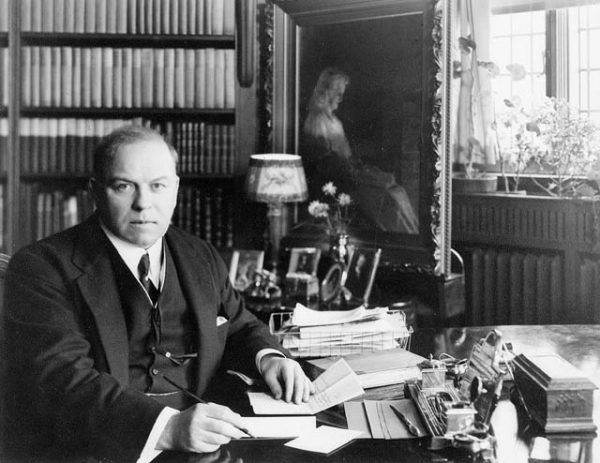An analog 12-hour clock has two hands that respectively indicate the hours and the minutes of the current time. These two hands form two complementary angles, that are colored green and orange in the figure below. What is the smallest angle formed by the two hands?

For example, at 16:37 the angles of an analog clock form an angle of 83.5°, as indicated by the green colored angle in the above figure. Notice that the hour hand of an analog clock keeps progressing as the minutes pass by.
Input
Two lines containing a single integer. These numbers respectively represent the hours $$h \in \mathbb{N}$$ ($$0 \leq h \leq 23$$) and minutes $$m \in \mathbb{N}$$ ($$0 \leq m \leq 59$$) of the current time in 24-hour notation.
Output
The sentence
At uu:mm both hands form an angle of gg°.
where the italic fragments need to filled up with values derived from the input values. The placeholders uu and mm need to be filled up respectively with the given hours and minutes of the current time in 24-hour notation. Both numbers need to be formatted using two digits, with an extra leading zero if needed. The placeholder gg needs to be filled up with the smallest angle (expressed in degrees) that is formed by the two hands of a 12-hour clock at the given time. This angle needs to be formatted as a floating point number with a single decimal digit. Rounding must be used to determine the decimal digits.
Example
Input:
16
37Output:
At 16:37 both hands form an angle of 83.5°.Example
Input:
6 1
Output:
At 06:01 both hands form an angle of 174.5°.
Epilogue
Canadian prime minister Mackenzie King1 took peculiar note of the relative position of clock hands. This began as early as 1918, when his diary shows that he began to notice moments when the hands overlapped (as at 12:00) or formed a straight line (as at 6:00). By the 1940s the diary sometimes refers to clock hands several times a day. On Aug. 25, 1943, when Franklin Roosevelt was visiting Ottawa, King wrote a whole "Memo re hands of clock":
-
Exactly 10 past 8 when I looked at clock on waking — straight line.
-
12 noon when noon day gun fired & I read my welcome to President — together.
-
25 to 8 when I was handed in my room a letter from Churchill re supply of whiskey to troops … — both together.
A year later, Nov. 2, 1944:
As I look at the clock from where I am standing as I dictate this sentence, the hands are both together at 5 to 11.

Biographer Robert Macgregor Dawson writes:
What significance he attached to the occurrences is difficult to determine; there is no key to his interpretation.
But one clue comes later in 1944, when King records a conversation with Violet Markham:
As I … went to take the watch out of my pocket, to show her how the face had been broken, I looked at it and the two hands were exactly at 10 to 10. I mentioned it to her as an illustration of my belief that some presence was making itself known to me. That I was on the right line, and that the thought was a true one which I was expressing.
But the two had been discussing the death of King's dog, so the meaning is still very obscure.